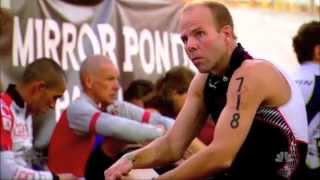Thursday, 25 December, 2025г.
















Где искать: по сайтам Запорожской области, статьи, видео ролики
пример: покупка автомобиля в Запорожье
Récupération Active VS Passif : Une lutte contre la désinformation
Le but de cette vidéo est de partager mes connaissances et mon point de vue sur le choix de sa récupération.
Mais surtout, c'est de faire comprendre qu'il faut chercher à remettre les choses en questions.
Pour nous soutenir dans notre projet :
Abonnez vous à cette chaine
Aimez cette vidéo si elle vous a plu
Pour retrouver mes articles, mes réseaux, ou vous faire coacher :
http://www.3athlete.fr/
Rejoignez-nous sur :
Facebook : https://www.facebook.com/ironuman/
Twitch : https://www.twitch.tv/ironumanirl
Strava : Tristan IronUman
Instagram : https://www.instagram.com/tristanpwlk/
Mes sponsors pour cette aventure :
Orbea Campus Paris : https://www.espacebellouis.com/
Prime Training : http://www.primetraining.fr/
Liste des études utilisées en plus de mes connaissances :
Abderrahmane, A. & al. Recovery (Passive vs Active) during interval training and plasma catecholamine responses.
Arslan, E., & al (2017). Effects of Passive and Active Rest on Physiological Responses and Time Motion Characteristics in Different Small Sided Soccer Games
Cupeiro, R., & al (2016). Role of the monocarboxylate transporter MCT1 in the uptake of lactate during active recovery.
Barbosa, L. & al (2016). Endurance performance during severe-intensity intermittent cycling: Effect of exercise duration and recovery type.
Dupont, G., & al (2003). Performance for short intermittent runs: Active recovery vs. passive recovery.
Fairchild, T. J., & al (2003). Glycogen synthesis in muscle fibers during active recovery from intense exercise.
Owell, D& al (2003). Effect of active vs passive recovery on repeated sprint.pdf.
Dupont, G& al (2004). Passive versus Active Recovery during High-Intensity Intermittent Exercises.
Richard, N. & al (2018). Optimizing recovery to support multi-evening cycling competition performance
Armstrong, L. E& al (2017). Effect of a 42.2-km footrace and subsequent rest or exercise on muscular strength and work capacity.
Trojbicz, L. R., & al. (2018). Parasympathetic activity delayed after self-paced exercise.
Lopez, E. I. D., & al (2014). The effect of passive versus active recovery on power output over six repeated Wingate sprints. Research Quarterly for Exercise and Sport, 85(4), 519–526.
Thevenet, D., & al (2007). Influence of recovery mode (passive vs. active) on time spent at maximal oxygen uptake during an intermittent session in young and endurance-trained athletes.
Toubekis, A. G& al (2008). Effects of active and passive recovery on performance during repeated-sprint swimming.
Wiewelhove, T., & al. (2018). Active recovery after high-intensity interval-training does not attenuate training adaptation.
Ahl, P. A. & al (2013). PASSIVE RECOVERY IS SUPERIOR TO ACTIVE RECOVERY DURING A HIGH-INTENSITY SHOCK MICROCYCLE.
During, N. L., & al (2013). Effect of repeated active recovery during a high-intensity interval training shock microcycle on markers of fatigue Submission.
Dupont, G., & Berthoin, S. (2004). Time Spent at a High Percentage of V02max for Short Intermittent Runs: Active Versus Passive Recover.
Aber, & al (2011). COMPARISON OF METABOLIC AND BIOMECHANIC RESPONSES TO ACTIVE VS. PASSIVE WARM-UP PROCEDURES BEFORE PHYSICAL EXERCISE.
Abraj, & al (2019). ACTIVE RECOVERY INDUCES GREATER ENDURANCE ADAPTATIONS WHEN PERFORMING SPRINT INTERVAL TRAINING.
Теги:
sports musculation fitness ironman running motivation triathlon guide vlog training workout France Paris swimming documentaire tuto conseil course à pied entrainement leleu semi marathon nutrition renforcement preparation physique natation cyclisme vélo bike and run Nice 70.3 championnats du monde world championship Running addict recuperation passive active
Похожие видео
Мой аккаунт


 У вашего броузера проблема в совместимости с HTML5
У вашего броузера проблема в совместимости с HTML5


![Your BEST 5k Run - DRI TRI [PART 4]](/images/mq/8/c8/0jxqIu3Yegf856.jpg)